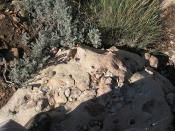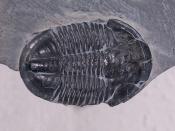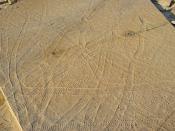Washington is a very diverse place for fossils and sedimentary rock, with relatively young deposits of rock found on the Western and Eastern parts. A cast of an ancient rhinoceros can be found at the UW that tells the tale of great extinction. In one corner of Washington Paleozoic and pre-Paleozoic rocks can be found, showing creatures with skeletons. A town in Washington called Addy is a place where one can walk up a hill and go through thousands of years of time in the sediment and sandstones with every step. The Quartzite in the Addy has the first record of fossils of brachiopods.
The history of life falls into two periods, the long period of 3 billion years, and a short period of 600 million years of living fossils. Trilobites and brachiopods seemed to spear suddenly without any evolution, found in their complex state in their fossils, and Darwin was puzzled by this, making a whole section for it in his Origin of the Species, and until he died knew that there was some evolution that occurred before these complex organisms were formed.
C.D. Walcott then suggested that the fossils of these animals before the Cambrian Period simply were not able to survive, and labeled this pre-evolutional organism period as the Lipalian.
Stromatolites are large globular bodies that are formed when algae is covered by a layer of sediment, and sends filaments upward. They flourished in the Precambrian era, but about 800 years ago are believed to have been over eaten by organisms, and left in few numbers to fossilize. Because they grow so slowly, as organisms began eating more and more, they were pretty much eaten off the planet. Ediacarian fossil faunas were found in 1946, and were from the latest Precambrian age, its exact age between 600...



Not finished
This essay is not finished.... give more details or the ending.
0 out of 0 people found this comment useful.